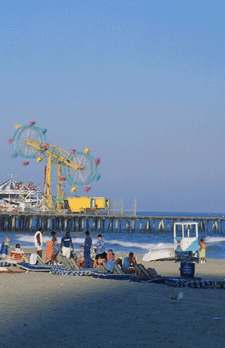The Middle Atlantic

If New England provided the brains and dollars for 19th-century American expansion, the Middle Atlantic states provided the muscle. The region's largest states, New York and Pennsylvania, became centers of heavy industry (iron, glass, and steel).
 |
The Middle Atlantic region was settled by a wider range of people than New England. Dutch immigrants moved into the lower Hudson River Valley in what is now New York State. Swedes went to Delaware. English Catholics founded Maryland, and an English Protestant sect, the Friends (Quakers), settled Pennsylvania. In time, all these settlements fell under English control, but the region continued to be a magnet for people of diverse nationalities.
Early settlers were mostly farmers and traders, and the region served as a bridge between North and South. Philadelphia, in Pennsylvania, midway between the northern and southern colonies, was home to the Continental Congress, the convention of delegates from the original colonies that organized the American Revolution. The same city was the birthplace of the Declaration of Independence in 1776 and the U.S. Constitution in 1787.
As heavy industry spread throughout the region, rivers such as the Hudson and Delaware were transformed into vital shipping lanes. Cities on waterways -- New York on the Hudson, Philadelphia on the Delaware, Baltimore on Chesapeake Bay -- grew dramatically. New York is still the nation's largest city, its financial hub, and its cultural center.
Like New England, the Middle Atlantic region has seen much of its heavy industry relocate elsewhere. Other industries, such as drug manufacturing and communications, have taken up the slack.







